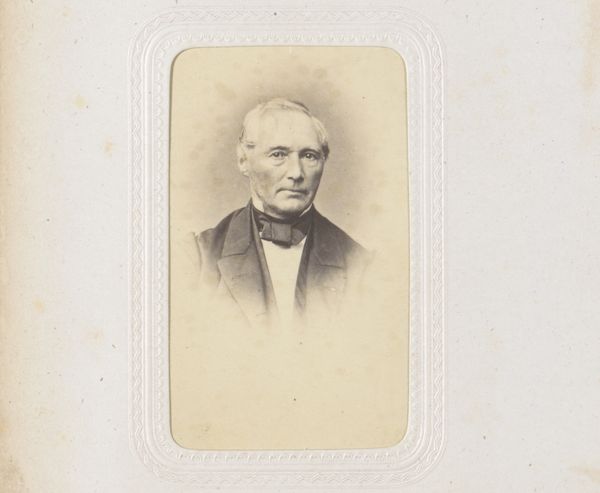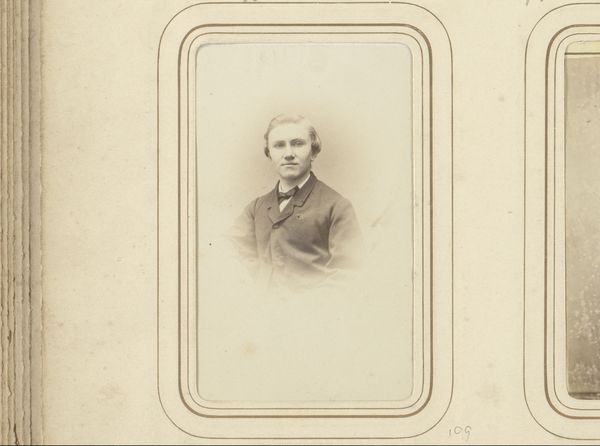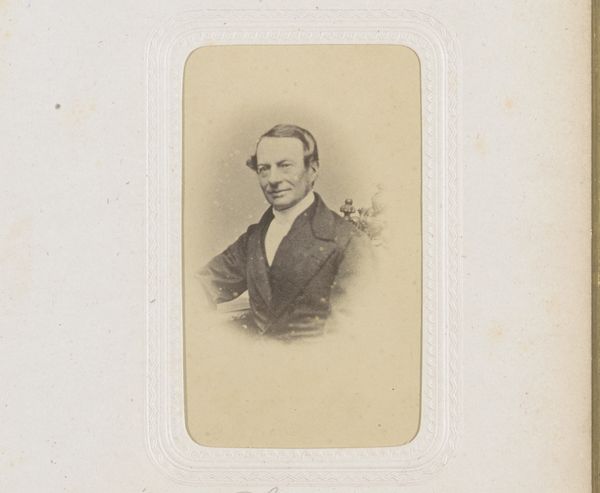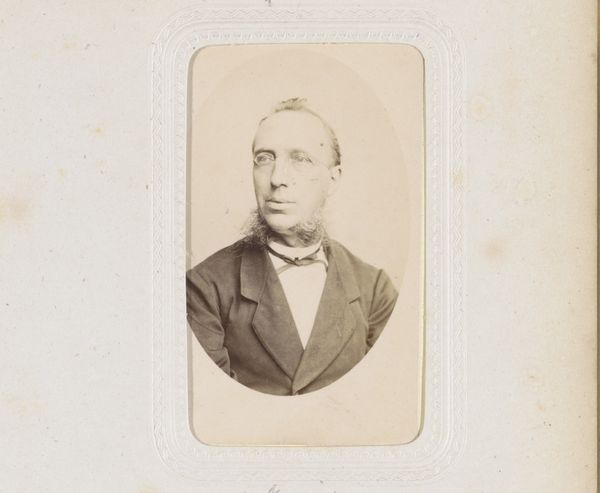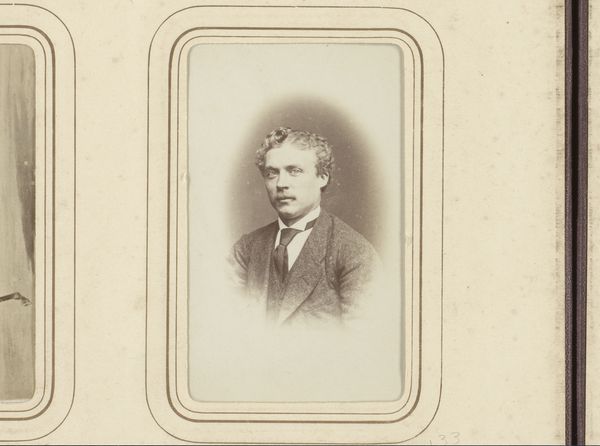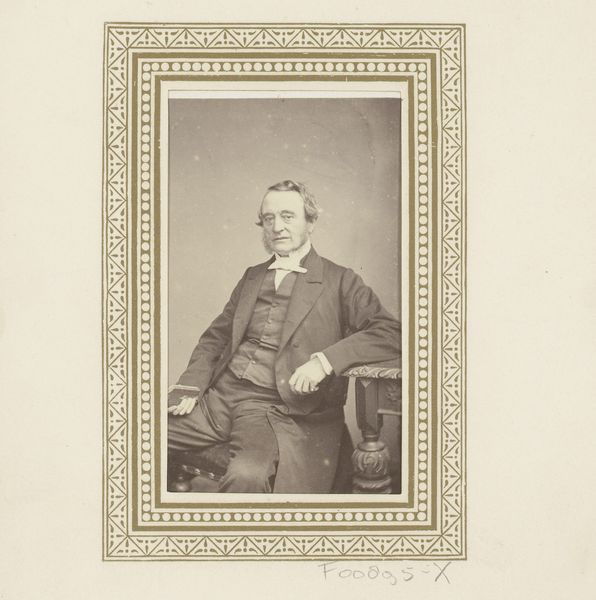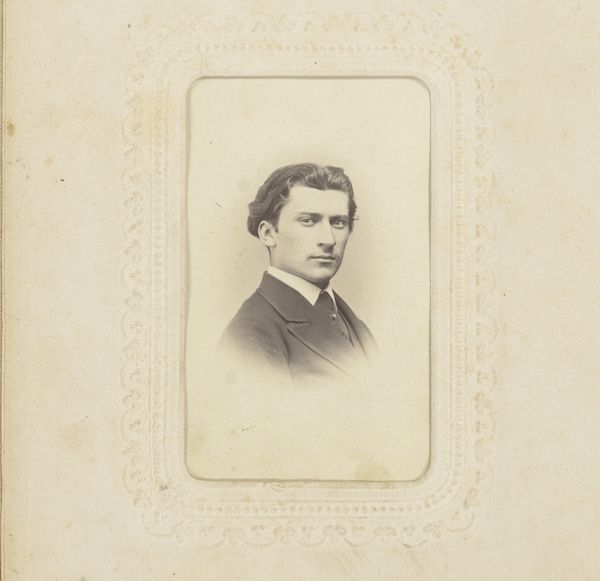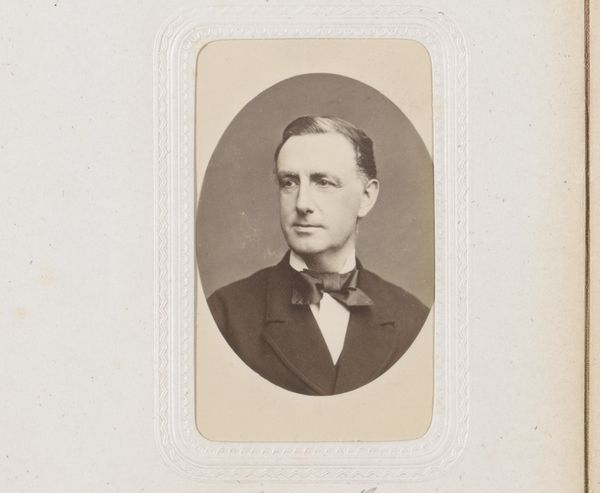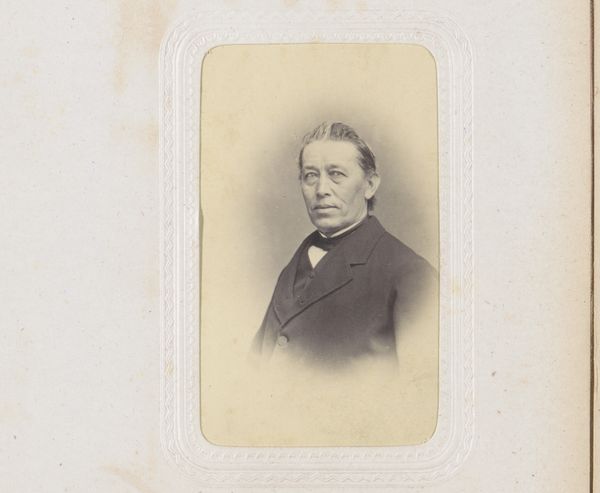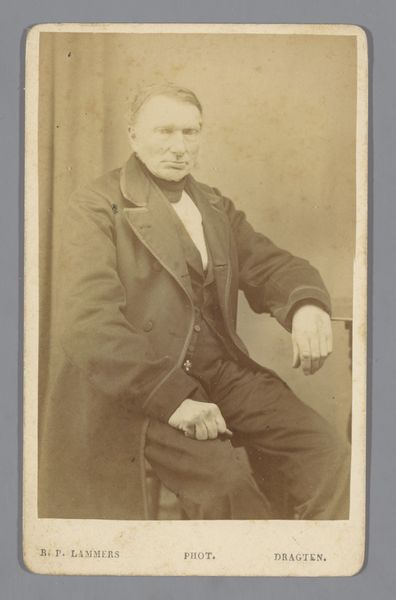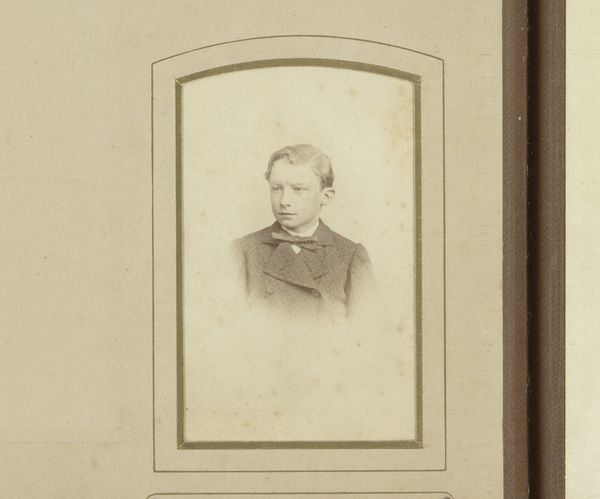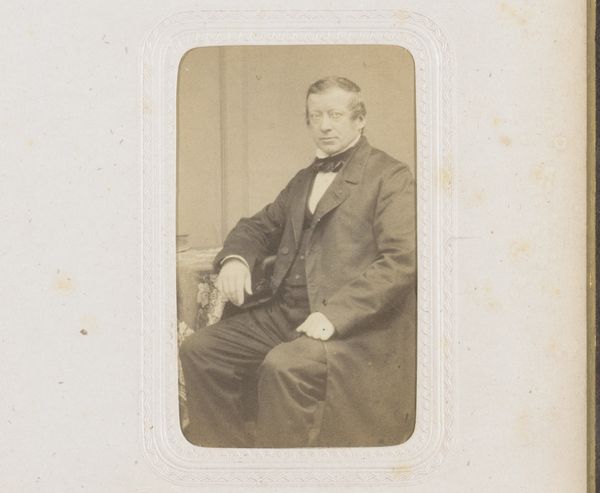
photography, albumen-print
#
portrait
#
photography
#
albumen-print
Dimensions: height 82 mm, width 50 mm
Copyright: Rijks Museum: Open Domain
Curator: This albumen print, dating from somewhere between 1864 and 1890, is simply titled "Portret van een man"—Portrait of a Man. The subject is credited to Ed. Radermacher. Editor: He appears a bit severe. His posture is erect, almost rigid, and the cool sepia tones only amplify that solemnity. It gives me a sense of distance. Curator: Yes, the tonality and limited dynamic range of albumen prints tend to produce a flattening effect. Consider how the framing also emphasizes that flatness: the ornamented border contrasts the simple rectangular form containing the portrait, producing a composition that pushes the figure forward. Editor: You know, his gaze feels quite direct. In that era, a controlled expression probably signified seriousness of purpose. Perhaps his tailored clothing hints at aspirations of respectability, aligning with bourgeois ideals. Curator: Notice how the sharp focus renders every detail of his face? The minute textures of the skin, the almost mathematical precision of the hairline... This intense scrutiny, typical of photographic portraiture of the time, becomes its own form of symbolic language, a testament to realism. Editor: Do you think it might also signal the sitter’s desire for control—a desire to project a particular version of himself, carefully considered and devoid of visible flaw or vulnerability? I feel that the artist wanted to capture some sort of permanence, to be remembered as important and worthy. Curator: An interesting possibility, though the relative soft focus around the collar suggests the photographer may have intentionally softened some elements. Consider the way the sternness we discussed plays with the slightly asymmetrical cut of his necktie, providing subtle counterpoint to what could be interpreted as almost architectural in its rigid geometry. Editor: Perhaps it shows a vulnerability—a hint that he, like all of us, is not quite perfect, or fully knowable. The fact that the photographic surface itself ages with its emulsion visible around the ornamented frame seems to reinforce that vulnerability. It will fade, like memory. Curator: Precisely; and, within that tension between intent and chance, this simple portrait finds its particular resonance. Editor: Indeed; and reminds us that even what we consider facts can offer profound narratives and complexities.
Comments
No comments
Be the first to comment and join the conversation on the ultimate creative platform.
